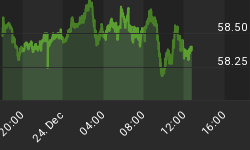I'm sure you've heard of gold, silver, platinum, palladium, uranium and perhaps even molybdenum but have you ever heard of vanadium, cadmium, lithium, rhenium, niobium or tantalum? This essay is limited to an examination of tantalum (Ta) and what the companies that explore for, mine and process tantalum might expect in the prices of their shares given the possible shortage of a product that is used in many, many areas of our lives.
What is Tantalum?
Tantalum is a rare metal found in Australia (56%), Africa (19%), Brazil (16%), China (5%) and Canada (4%). This high performance metal has a high melting point, high strength, high ductility, high reliability, high resistance to corrosion and high thermal conductivity making it a highly efficient, highly reliable and environmentally versatile component for use in a wide variety of applications that contribute significantly to our economy and way of life.
What is the Market for Tantalum?
The largest application for tantalum (approx. 68%) is in the electronics capacitor industry in such products as cell phones, DVD players, personal computers, digital cameras, gaming platforms, LCD monitors, wireless devices, telephone switch boards and computer networks because of its unequaled capacity to store and release electrical charges. Other electronics applications (11%) are in PC memory chips, igniter chips for car air bags and other automotive electronics. In addition, tantalum is used in the manufacture of super alloys (8%) for jet engines, turbines, space vehicles, nuclear reactors, power plants and chemical equipment due to its extreme hardness; in the manufacture of carbides (5%) for cutting tools, drill bits, excavator and bulldozer teeth and the forming of dies; in sputtering targets (2%) for use as optical coatings, memory chips and silicon wafers for use in microcompressors; in military and recreational ammunition (1%) and in the manufacture of a variety of other products (3%) such as rayon fibers, heat shields, ink jet printers, x-ray film, hip and knee replacement systems (because of its non-corrosive nature) and in the manufacture of surgical instruments and appliances.
What is the Demand for Tantalum?
According to the US Geological Survey Mineral Commodity Summaries report and the Tantalum-Niobium International Study Center
- world-wide demand for tantalum is currently (2006) 6 million pounds per year
- consumption has been increasing approx. 7% per annum over the past 20 years
- primary mine production has increased 38% since 2004 to 2.84 million pounds in 2006
- the USA imports 87% of its 1.5 million pounds annual requirement (the balance reclaimed from recycling) and, according to the US Defense Logistics Agency,
- the US's current stockpile of tantalum will be depleted by the end of 2007 at current disposal rates.
The above facts add up to an impending major imbalance in supply and demand starting in 2008 and quite possibly a major escalation in the price per pound of tantalum in the years ahead.
What is the Current Price of Tantalum?
Tantalum is not traded on the commodity metals markets but, rather, the price is freely negotiated between supplier and processor. As such, over the past 30 years, the tantalum market has been marked by long periods of stability, punctuated by very sharp price hikes created by a combination of strong demand and fear about a shortage of supply. Such was the case in 1999 and 2000 when many buyers of tantalum capacitors falsely believed there was a shortage and speculators and traders took advantage of the lack of communication between the various players and increased the price per pound from $30US/lb or so in 1999 to in excess of $240US/lb in 2000. This perceived shortage caused panic-buying by major companies to increase their inventories which only now are becoming depleted. This had the effect of drastically reducing the demand for and price of tantalum.
The 2006 year end average price per pound of contained tantalum pentoxide (Ta205), also called tantalum concentrate, was $32.40US ($15US/kg) while that of tantalum oxide powder (Ta) was somewhere around $500US/kg and tantalum metal ingot was a reported $700US/kg, up from a low of $200US/kg in August, 2002. Be that as it may, prices can vary greatly because the market is relatively small. In the opinion of Ed Hone, the author of a March, 2007 article on tantalum as it related to the business prospects of a specific company he was reviewing, "Ta has gotten a lot more expensive than the USGS's paltry $32.40. After all, the US government carries gold on the books at $42.50 per ounce."
From what we know about the many and growing market applications for tantalum, the impending supply shortage of tantalum, the present low price for tantalum and the historic high price tantalum commanded just a few years ago it is evident that the future price of tantalum has no where to go but up - big time!
How can an Investor Profit from Tantalum?
There are major 'unmined' profits to be had by investing in one or more of the tantalum junior explorer companies (12 in total of which 5 are major); mining companies (14 in total with 4 producing 60% of the world's supply); processor companies (9 of which 3 supply 80%); producer companies (26 in total of which 8 are major); integrators and recyclers. It behooves you to investigate the companies involved that are publicly traded (shares and warrants where the case may be), do your analyses, make an informed choice as to which ones to invest in and deploy your investment dollars accordingly. Tantalum is, indeed, a tantalizing investment opportunity that warrants further study. Do so and you may be on to something big!
Joel Jeangrand's paper on "Comprehensive Strategic Analysis of the Tantalum Industry" 2005 and Ed Hone's article of March, 2007 on tantalum are hereby acknowledged.
















